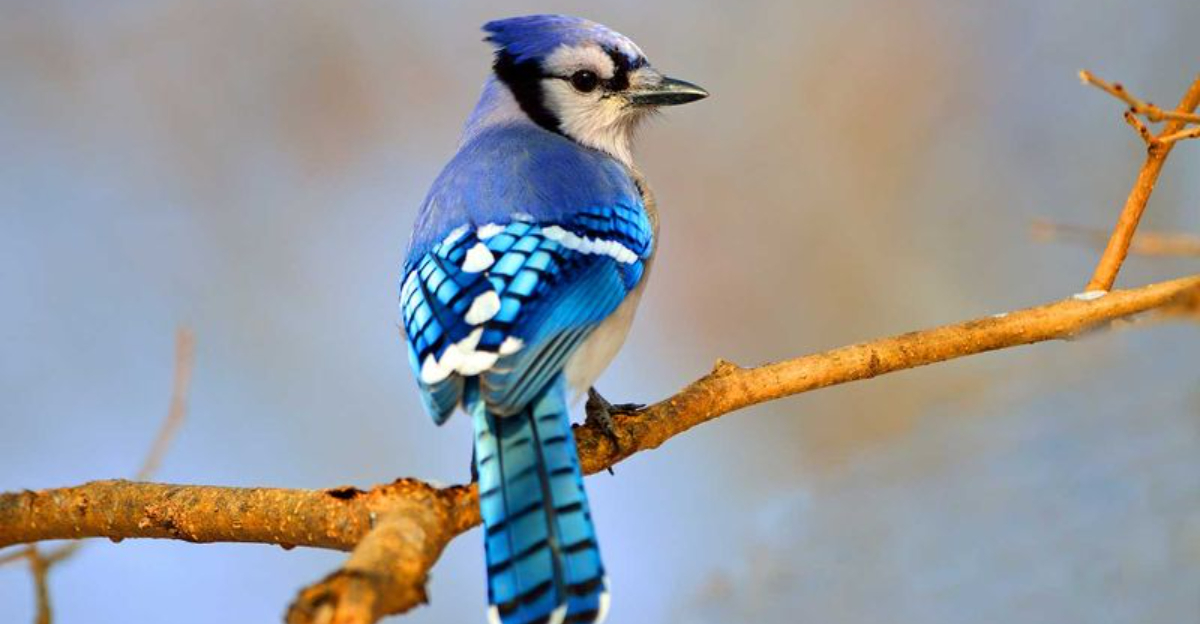As a bird enthusiast and cat owner in Illinois, I’ve learned that our feathered friends and feline companions don’t always mix well naturally.
Many beloved backyard birds fall victim to outdoor cats each year, creating a challenging situation for those who care about both.
Through years of observation and some trial and error, I’ve discovered ways to protect local birds while keeping my curious cat happy and stimulated. Here’s what you need to know about eight common Illinois birds and how to help them thrive alongside your house cat.
1. Northern Cardinal: The Brilliant Red Visitor
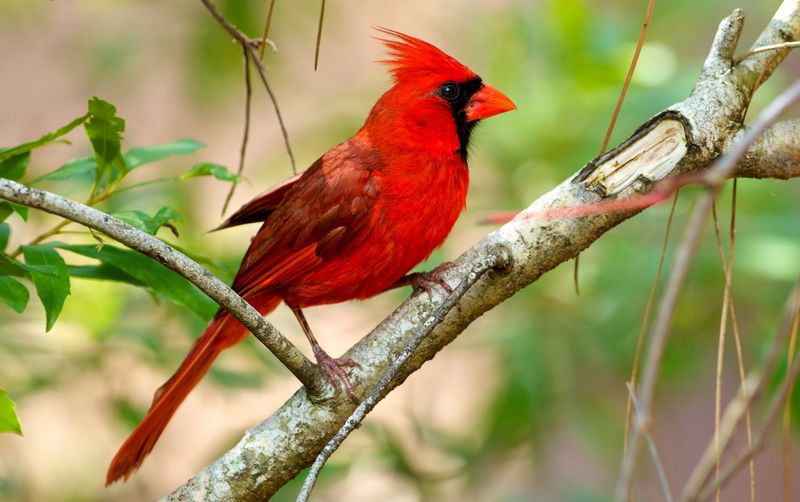
Cardinals bring a splash of crimson joy to Illinois yards year-round. My cat Charlie once spent hours chatting through the window at a male cardinal that regularly visited our feeder.
These birds nest in dense shrubs about 4-8 feet off the ground, making them vulnerable to climbing cats. I’ve found that placing feeders at least 10 feet from bushes reduces ambush opportunities while still attracting these beautiful birds.
Cardinals are early risers, so keeping your cat indoors during dawn hours when they’re most active can significantly reduce hunting pressure.
2. American Robin: The Lawn Hunter’s Challenge
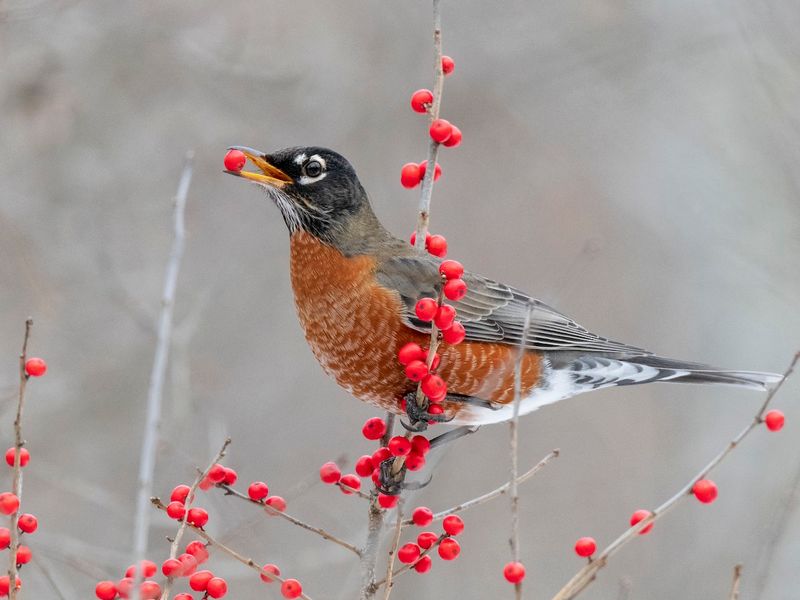
Remember how robins hop across lawns hunting for worms? These orange-breasted birds are particularly vulnerable to cats because they feed on the ground.
Robins build mud-lined nests in trees and shrubs, typically returning to the same yard each year.
Creating a cat-free zone with native plants and ground cover can provide robins with protected feeding areas.
Adding a small birdbath with fresh water attracts robins while keeping it elevated prevents cat access. Their cheerful morning song is worth the extra effort to protect them!
3. House Sparrow: The Adaptable Urban Dweller
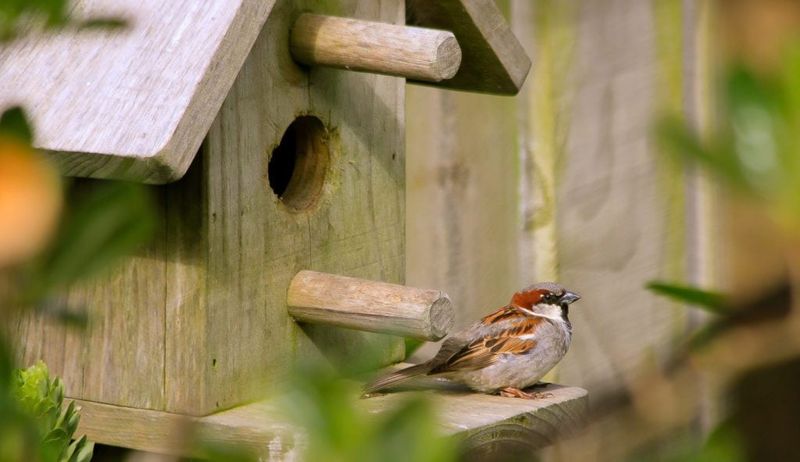
These little brown birds might seem ordinary, but they’ve mastered city living better than most wildlife.
Last summer, a family of sparrows nested in my porch light despite my cat’s constant window surveillance!
House sparrows are cavity nesters that readily use birdhouses with entrance holes too small for cat paws. Placing these houses on smooth metal poles with baffles creates safe spots even in cat-populated areas.
Though sometimes considered pests, sparrows still deserve protection from predation.
4. Blue Jay: The Noisy Neighborhood Watch
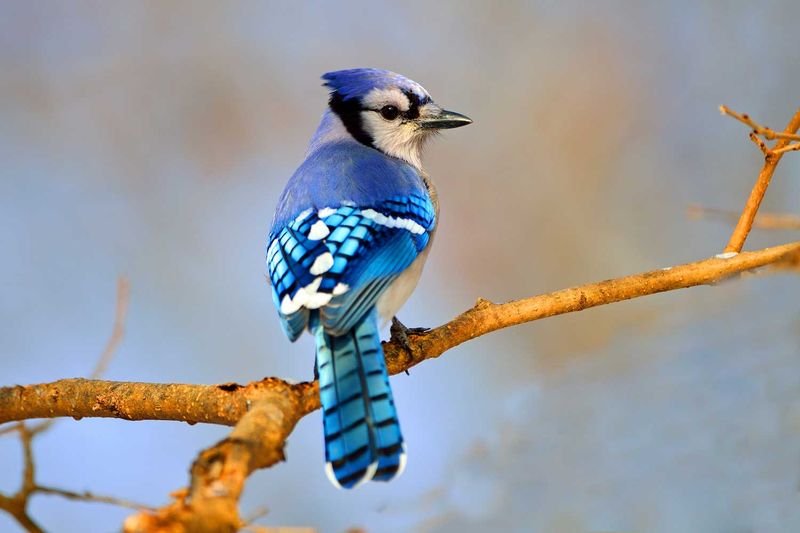
Blue jays are the tattletales of the bird world!
When my cat Whiskers tried stalking birds in our yard, a jay’s harsh scolding alerted the entire neighborhood to the danger.
These intelligent birds with blue feathers actually help protect other species by sounding alarms when predators approach. They cache acorns and seeds, aiding in forest regeneration throughout Illinois.
Jays are less vulnerable to cats than some birds due to their size and wariness. Providing peanuts in shell on platform feeders away from hiding spots gives them a safe snacking zone while keeping your cat entertained by their antics from a window perch. It’s a double benefit!
5. Mourning Dove: The Gentle Ground Feeder
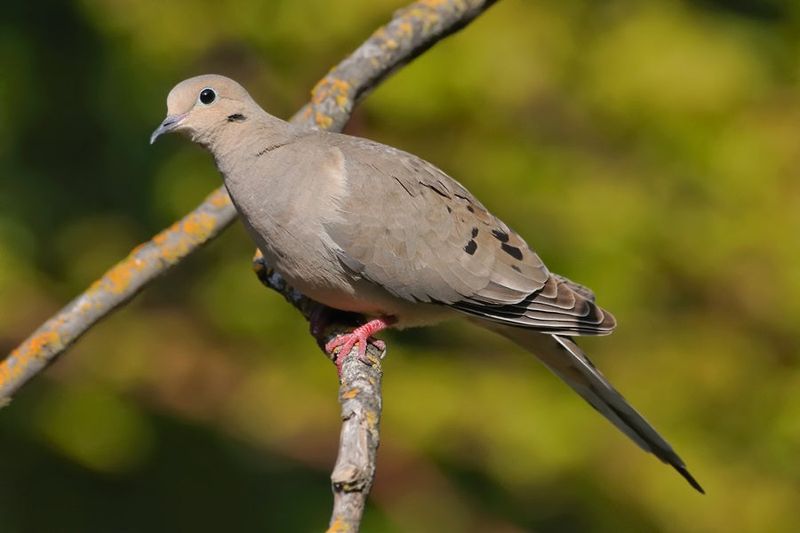
These birds’ ground-feeding habits make them prime targets for hunting cats.
I’ve found success creating raised feeding platforms with wide clearance zones that allow them to spot approaching danger.
Mourning doves mate for life and raise multiple broods each season in simple platform nests. Installing motion-activated sprinklers can create cat-free zones in your yard while providing your feline with indoor bird-watching opportunities.
6. Common Grackle: The Misunderstood Metallic Visitor
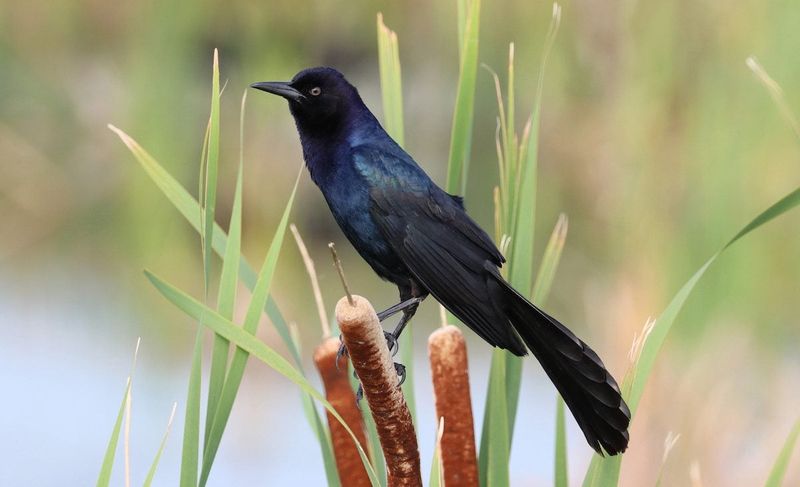
Grackles are more beautiful than many people realize! My cat seems especially fascinated by their strange, creaky calls that sound like rusty gates.
Their larger size makes them less vulnerable to cats, but they still benefit from feeding stations placed in open areas away from ambush spots.
Despite their sometimes aggressive behavior at feeders, grackles play important roles controlling insects in our ecosystems. Creating bird-safe zones with thorny native shrubs provides natural protection!
7. Eastern Bluebird: The Cavity-Nesting Jewel
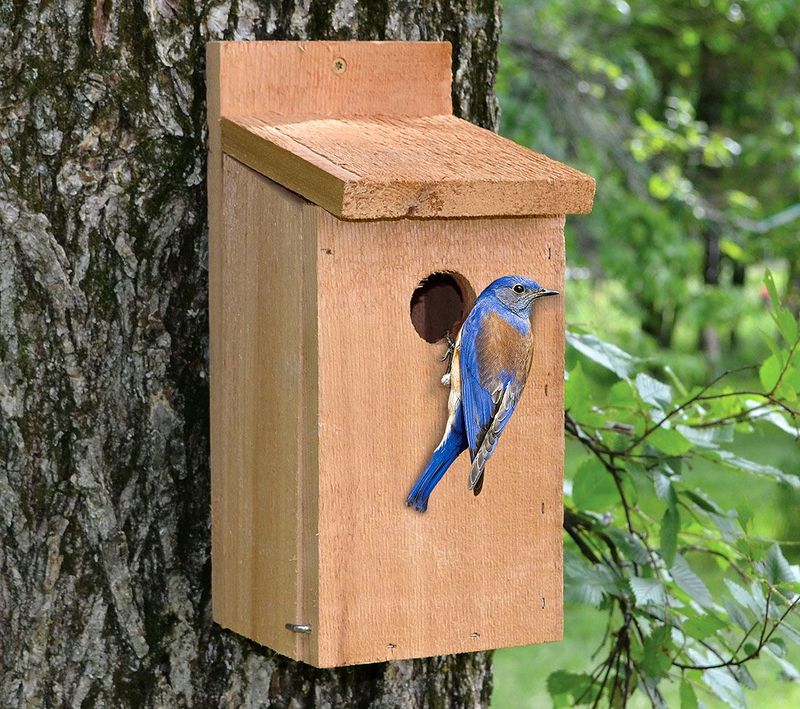
The first time I spotted a male bluebird’s brilliant azure feathers against winter snow, I was completely mesmerized. These birds have made a comeback in Illinois thanks to conservation efforts and nest box programs.
Eastern bluebirds rely on tree cavities or nest boxes to raise their young. Installing proper bluebird houses on predator-proof poles creates safe havens beyond a cat’s reach.
Keeping mealworms in a special feeder away from brush piles or cat hiding spots helps attract these gorgeous birds while maintaining their safety.
8. Red-Tailed Hawk: The Majestic Raptor
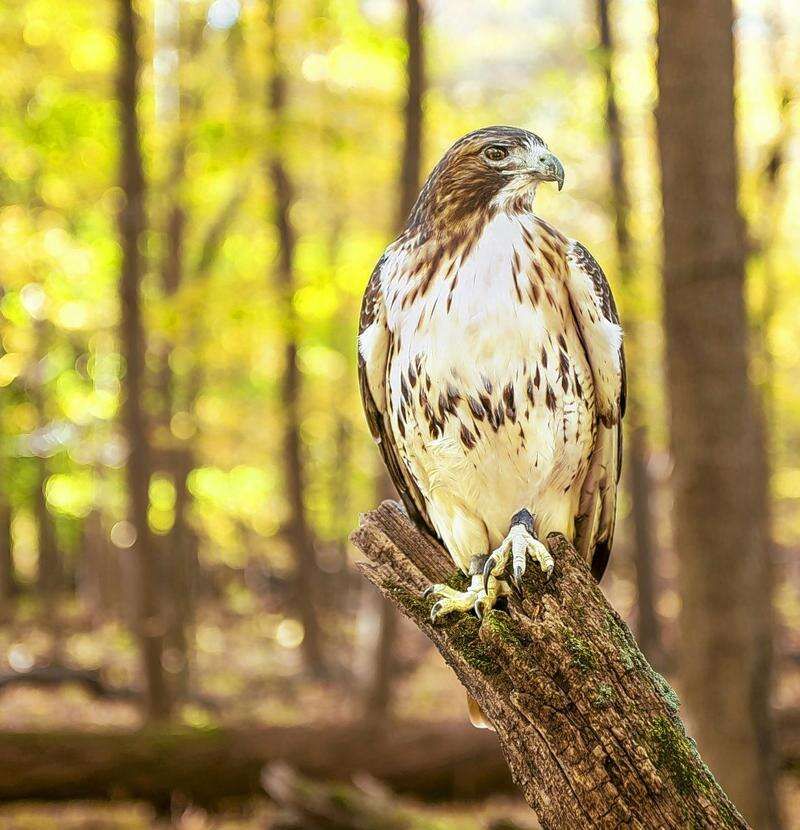
These powerful birds of prey actually create an interesting dynamic with house cats!
Hawks hunt many of the same small animals cats target, but they may also view small pets as potential prey. This natural fear keeps many cats from roaming too far from safety when outdoors.
I’ve noticed my cat becomes extremely alert when hawk shadows pass overhead. Creating a protected catio or enclosed outdoor space lets your cat safely experience nature while protecting both smaller birds and your feline friend from potential hawk encounters.
